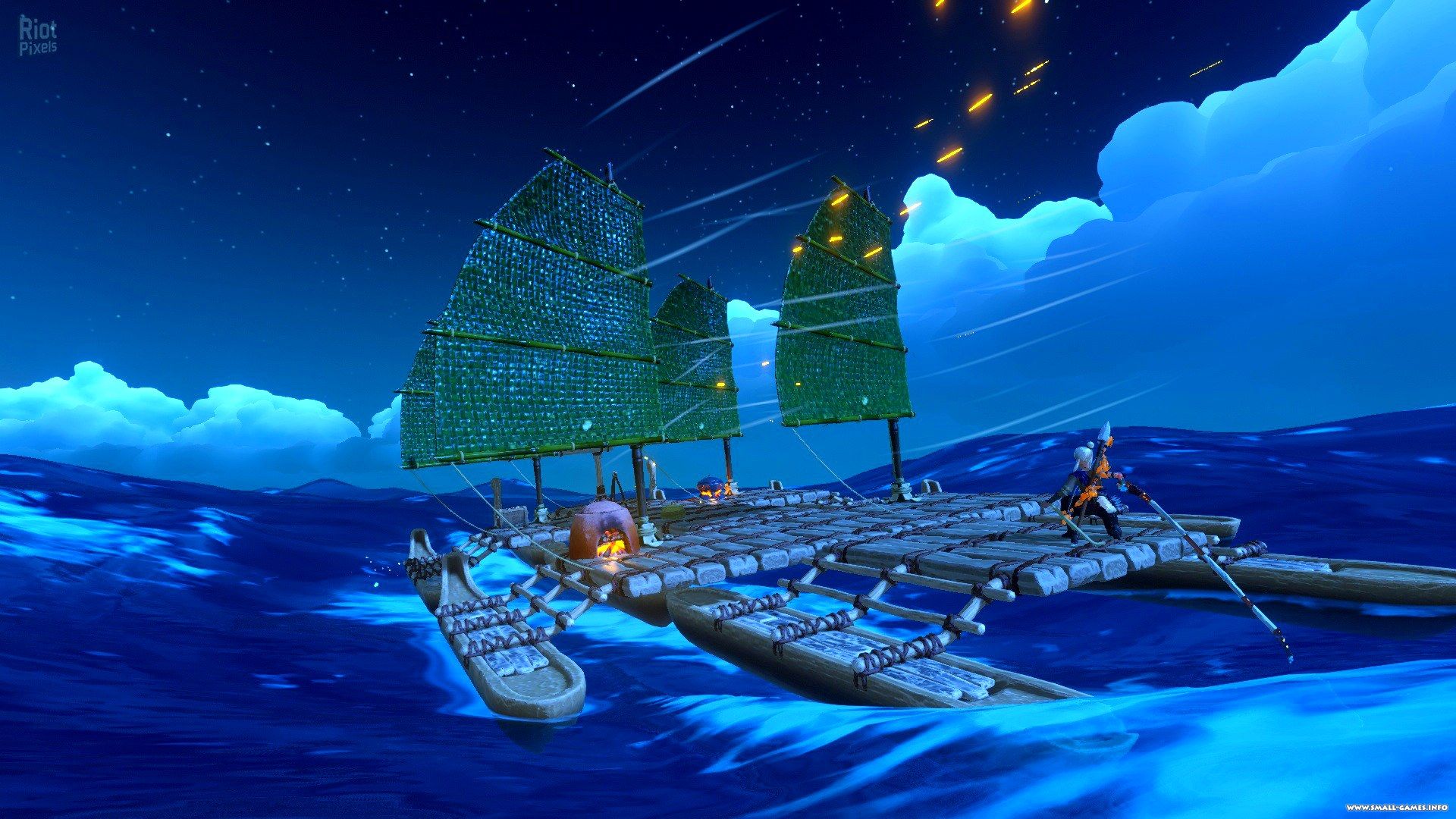

Generally, it does feel like your stamina depletion slows down while sailing, but I would have enjoyed exploring more if it had paused altogether.Īlthough it is encouraged, I never found hunting worthwhile.

Indeed, you can find yourself in the water so much that you might even run down your stamina while sailing. You really do need to master sailing in order to succeed. Islands become more difficult to reach, walled off by stone rings or coral that must be negotiated to find openings. The ocean also increases in complexity, with more islands dotted about to explore, some of them offering permanent upgrades to your stamina or extra shards to spend before the next chapter. This expands the gameplay as you are better able to maintain your hunger and stamina to keep exploring. The difference is that as you progress through chapters, the islands become larger, supporting more varied biomes, new creatures and resources. If you have earned enough blue shards, you might be able to purchase a permanent buff or upgrade, before you sail into a glowing portal and wake up in a new chapter, to repeat it all again. Here, some story exposition is etched upon the walls before you have to take on a rough-water sailing gauntlet through a course filled with coral and sharp rocks. You then need to find a central structure to press a further three buttons and progress to a kind of luminal space between chapters. Windbound’s general gameplay loop consists of starting each chapter on an island, finding three islands with towers on them, climbing these towers to press a button, which puts some magic into Kara’s necklace. To add to the ‘fun’, sea creatures can leap at your boat, necessitating a trip to a bamboo island to craft some spikes to protect your boat from such attacks. The boat will shift direction with the wind and the wave formations, often steering you precariously close to rocks or small reefs that can appear at almost any moment. To travel with the wind, you have to loosen the sail. To move against the wind, you must tighten the sail and use a tacking technique, moving from side to side to progress against the wind’s direction.
#Windbound chapter 2 map how to#
You must come to understand how to harness the wind by tightening or loosening the sails. You don’t just hop on your crafted sailboat, press ‘sail’ and steer it across the water. This is what you will be doing for a lot of your time. If there is an aspect of Windbound that stands out, apart from its obviously beautiful art aesthetic, it is the core mechanics of sailing. I found myself gaming the story mode itself for the first couple of chapters, practically ignoring hunger and trying to complete chapter requirements before I died from gastric neglect. I found hunting animals in the opening chapters almost worthless, as by the time you spend stamina and resources on weapons, ammo and time to hunt and harvest/cook them, you end up with little-to-no gain for hunger and stamina. To begin with, the procedurally-generated islands you explore are small, food and resources scarce and there is little in the ocean apart from saltwater. And let me tell you, with the number of times I died early on, that option would have had me quitting permanently. Choose Survival Mode and each death shoots you back to Chapter One with empty bags. And while only the bravest will jump into Survival Mode proper, Windbound’s saving grace for Bear Grylls dropouts is the option of Story Mode, whereby if you die you keep your entire inventory, chapter place and have an easier time with combat.
#Windbound chapter 2 map full#
The visuals might have you hoping for a cutesy sailing adventure full of charm and whimsy, but you need to be into survival games to enjoy Windbound.
#Windbound chapter 2 map Ps4#
Windbound -Sailing and Survival PC, Xbox One, PS4


 0 kommentar(er)
0 kommentar(er)
